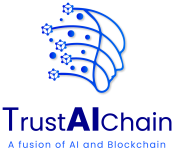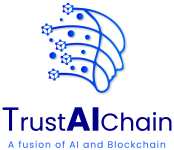In cybersecurity, outages and defects can be just as disruptive as breaches. The recent incident involving CrowdStrike’s “Falcon” cybersecurity defense software, which affected Windows hosts, underscores the importance of robust systems that can prevent breaches and unintended outages. This blog delves into the details of the CrowdStrike incident, exploring how artificial intelligence (AI) and Blockchain technologies can be leveraged to prevent similar occurrences in the future, ensuring uninterrupted protection and service continuity.
Understanding the CrowdStrike Falcon Incident
The CrowdStrike Falcon incident was characterized by an outage caused by a defect in a content update to its cybersecurity defense software for Windows hosts. Unlike a breach, where malicious actors gain unauthorized access to systems and data, this outage resulted from an internal software issue that led to widespread disruptions.
Key Factors in the CrowdStrike Falcon Incident
-
Defective Content Update: The root cause of the outage was a defect in a content update, which affected the functionality of the Falcon software on Windows hosts.
-
Service Disruption: The defect led to significant service disruptions, impacting the ability of the Falcon software to provide cybersecurity protection.
-
Resolution Efforts: CrowdStrike had to quickly identify and rectify the defect, restoring the functionality of the Falcon software and minimizing downtime.

The Role of AI in Preventing Outages
Artificial Intelligence has the potential to play a crucial role in preventing outages and ensuring the stability of cybersecurity systems. AI’s capabilities in predictive maintenance, anomaly detection, and real-time monitoring can significantly enhance the reliability of software updates and overall system performance.
AI-Driven Predictive Maintenance
-
Predictive Analytics: AI can analyze historical data and detect patterns indicating potential defects or issues in software updates before deployment.
-
Proactive Maintenance: By identifying potential issues early, AI can trigger proactive maintenance actions, preventing defects from causing outages.
-
Continuous Monitoring: AI systems can continuously monitor the performance and health of cybersecurity software, detecting anomalies that may indicate a defect.
-
Immediate Response: Upon detecting an anomaly, AI can initiate immediate corrective actions, such as rolling back updates or isolating affected components, to prevent widespread disruptions.

Blockchain for Enhancing Software Update Integrity
Blockchain technology, known for its decentralized and immutable nature, offers unique advantages in enhancing the integrity and reliability of software updates. Blockchain can ensure that updates are secure and defects-free by creating a transparent and tamper-proof ledger.
-
Immutable Records: Once an update is recorded on a Blockchain, it cannot be altered or deleted, ensuring the integrity and authenticity of the update.
-
Decentralized Verification: Blockchain enables decentralized verification of updates, where multiple nodes validate the update before it is deployed, reducing the risk of defects.
-
Transparent Audit Trails: Blockchain provides a transparent audit trail of all updates and changes, making tracing and addressing any issues easier.
-
Accountability: By recording every action on a Blockchain, organizations can ensure accountability, making it easier to identify the source of defects and take corrective measures.

�
Case Study: Implementing AI and Blockchain at CrowdStrike
To illustrate the potential of AI and Blockchain, let’s consider how CrowdStrike could leverage these technologies to prevent future outages and ensure the reliability of its Falcon software.
AI-Powered Predictive Maintenance at CrowdStrike
-
Comprehensive Analysis: AI systems can continuously analyze the performance and health of Falcon software, identifying potential defects before they cause outages.
-
Proactive Updates: AI can recommend and initiate proactive updates and maintenance actions based on predictive analytics, preventing defects from impacting functionality.
Blockchain-Enhanced Update Integrity
-
Immutable Logging: All updates and changes to Falcon software can be recorded on a Blockchain, ensuring their integrity and providing a transparent audit trail.
-
Decentralized Validation: Updates can be validated by multiple nodes on a Blockchain, reducing the risk of defects and ensuring that only secure and reliable updates are deployed.

Challenges and Considerations
While AI and Blockchain offer significant advantages, their implementation prevents outages and ensures system reliability is not without challenges.
-
Blockchain Scalability: Ensuring that Blockchain can handle the volume of data generated in real-time monitoring and update processes is crucial.
-
AI Performance:AI systems must be optimized to quickly process and analyze large datasets without compromising performance.
-
Seamless Integration: Integrating AI and Blockchain with cybersecurity infrastructure requires careful planning and execution.
-
Interoperability: Ensuring that AI and Blockchain systems can work seamlessly with other technologies and platforms is essential for comprehensive reliability.
Ethical and Legal Considerations
Balancing the need for data sharing and collaboration with privacy concerns is critical. Also, ensuring that AI and Blockchain implementations comply with relevant regulations and standards is essential.
In Summary
The CrowdStrike Falcon incident serves as a reminder of the complexities and challenges involved in maintaining reliable cybersecurity systems. However, by harnessing the power of AI and Blockchain, organizations can significantly enhance their ability to prevent outages and ensure the continuous protection of their digital infrastructures. AI’s capabilities in predictive maintenance and real-time monitoring, combined with Blockchain’s immutable and decentralized nature, create a robust framework for preventing defects and ensuring the integrity of software updates. Integrating these cutting-edge solutions will be pivotal in safeguarding our digital future and ensuring uninterrupted cybersecurity protection as technology advances.







